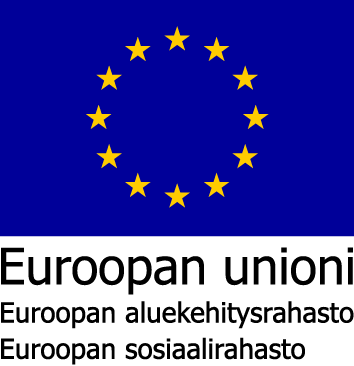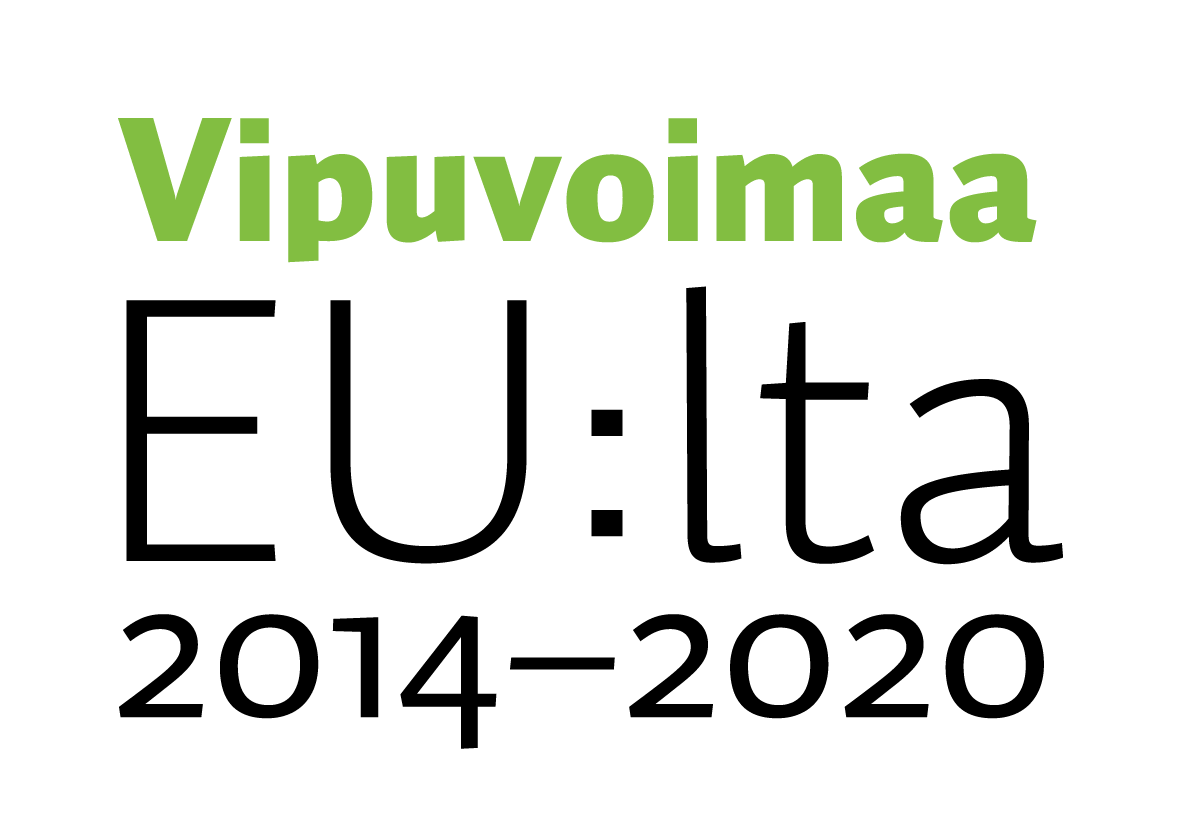

 |
 |
Hankekoodi: A71070
Hankkeen nimi: Biohiili päästöjen vähentäjänä ja lannan arvon kohottajana turkistarhoilla
Toimintalinja: 2. Uusimman tiedon ja osaamisen tuottaminen ja hyödyntäminen
Erityistavoite: 3.2. Uusiutuvan energian ja energiatehokkaiden ratkaisujen kehittäminen
Suunnitelman mukainen toteutusaika: Alkaa 1.8.2015 ja päättyy 30.6.2018
Toiminnan tila: Toiminta päättynyt
Vastuuviranomainen: Pohjois-Pohjanmaan liitto
Hakijan virallinen nimi: Luonnonvarakeskus
Organisaatiotyyppi: Valtion viranomainen
Y-tunnus: 0244629-2
Jakeluosoite: Latokartanonkaari 9
Puhelinnumero: 0295326000
Postinumero: 00790
Postitoimipaikka: Helsinki
WWW-osoite: http://www.luke.fi
Hankkeen yhteyshenkilön nimi: HELLSTEDT REIJA MAARIT
Yhteyshenkilön asema hakijaorganisaatiossa: Vanhempi tutkija
Yhteyshenkilön sähköpostisoite: maarit.hellstedt(at)luke.fi
Yhteyshenkilön puhelinnumero: 0295326120
Hakijoiden lukumäärä tai tuen siirto -menettely:
Turkistarhoilta muodostuu tällä hetkellä ravinne- ja kasvihuonekaasupäästöjä sekä hajuhaittaa. Tämä on asettanut elinkeinon jatkuvuuden kyseenalaiseksi. Uusia ratkaisuja tarvitaan kipeästi. Kalajoen alueella turkistuottajat ovat toimittaneet lantaa kompostointilaitokselle. Turkistarhojen lanta on ongelmajätettä, jonka käsittelystä peritään porttimaksu. Kun turkiseläinten tuottamaan lantaan sekoitetaan sopivaa seosainetta, lannasta saadaan orgaanisen lannoitteen raaka-ainetta Turkiseläinten lannan hyödyntäminen lannoitteeksi on tehokas tapa siirtää Itämeren fosforia kalarehun muodossa takaisin elintarvikkeiden tuotantoketjuun.
Biohiilen käyttö lannan seosaineena on uutta. Hankeen tavoitteena on löytää biohiilen ominaisuuksia hyödyntämällä liiketoiminnalliset ratkaisumallit turkistarhojen lannan hyödyntämiseen, jatkokäsittelyyn sekä ympäristökuormituksen vähentämiseen. Hankkeen keskeinen tavoite on synnyttää verkostoinnovaatio. Hanke kehittää yritysten yhteistoimintaa tavoitteena innovaatioverkosto ja pienentää myös toimijoiden yritystoiminnan suhdanneherkkyyttä. Hanke tuo turkistuotannon sen ravinteita jatkojalostamalla kiertotalouden piiriin .
Hankkeen tavoite on tutkia vaihtoehtoiset mahdollisuudet luoda alalle erikokoisia liiketoiminnallisia konsepteja, joilla on edellytykset kannattavaan liiketoimintaan ja kompostointiseoksen tuotteistamiseen, ja joilla on sekä kansallista että kansainvälistä kysyntää.
Hanke koostuu kolmesta pääosiosta, joiden alla on erilliset työpaketit.
Osio 1) Biohiilikuivikeseos jakautuu 4 työpakettiin, joissa selvitetään kuivikeseoksen oikea seossuhde, käyttöominaisuudet turkistarhoilla sekä lantaseoksen toiminta kompostointilaitoksella. Lannoiteseoksen soveltuvuutta varastolannoitukseen sekä biohiilen vedenpidätyskyvyn vaikutusta muodostuviin valuntoihin ja niiden ravinnepitoisuuksiin selvitetään pilottikokeessa golfkentällä. Kentälle suunnitellaan ja toteutetaan yhden väylän uusintatyö käyttäen rakenteissa rikastettua biohiiltä. Peltoviljelyn kaistakokeella selvitetään seoksen lannoitusvaikutus. Kokeet toteutetaan turkistuottajien omilla pelloilla lähellä lannoitusseoksen tuotantopaikkaa.
Osiossa 2) Komposti kaupalliseksi tuotteeksi tuotetaan tieto alueellisesta konseptista, sen toimijoista, heidän rooleistaan, syntyvistä materiaalivirroista sekä kytkennästä alueen muihin toimijoihin, oleellisena osana orgaanisten lannoitteiden tuotekehitysmahdollisuudet ja niihin liittyvät viranomaislupakäytännöt.
Osioon 3 sisältyy hankkeen koordinointi, raportointi ja tiedotus.
Hankkeen tuloksena fosforinkierrätys tehostuu. Fosfori käsitetään usein pistemäiseksi kuormitusriskiksi. Kun lanta jalostetaan orgaaniseksi lannoitteeksi ja valmiiksi kasvualustoiksi ja siirtyy sitä kautta elintarviketuotantoon, saadaan fosforin kierto tehokkaaksi toiminnaksi. Myös Itämeren fosforin luontainen kierrätys toteutuu hankkeen avulla. Fosforin tehostunut kierto vaikuttavat positiivisesti kotieläin- ja turkistuotteiden elinkaaren kokonaisvaikutuksiin.
Turkistarhoilla syntyvän lannan tuotteistamisella sektorille saadaan aikaan iso muutos, mikä edesauttaa tarhauksen jatkuvuutta. Koko toimialan hyväksyttävyys paranee, kun haittoja poistetaan ja hyödyt tuodaan julkisuuteen.
Hankkeessa tehtävien tutkimusten ja selvitysten tuloksena saadaan vaihtoehdot ja tarvittavat toimenpiteet kannattavaan liiketoimintaan. Tutkimukset ja selvitykset ovat julkisia ja niiden tulokset tullaan julkistamaan hankkeen loppuseminaarissa.
Hankkeen tuloksista hyötyvät turkistarhaajat, kun ongelmat lannan hyödyntämisessä ratkaistaan ja samalla tarhojen päästöjä vähennetään. Tuloksista hyötyvät myös kunnat/alueet, joille turkistuotanto on tärkeä elinkeino, kun turkistuotannon säilymisen edellytykset alueella säilyvät tai paranevat.
Hankkeen tuloksista hyötyvät ympäristölupia myöntävät viranomaiset, kun turkistarhoista johtuviin ympäristöongelmiin löytyy toimiva ratkaisu, joita luvissa voidaan edellyttää.
Kompostoinnin tuloksena syntyvästä orgaanisesta lannoitteesta jalostetaan kasvualustoja, joita voidaan käyttää moneen atrkoitukseen, mm. parvekeviljelyyn.
Hankkeen tuloksena luodaan toimintamalleja, joita voidaan hyödyntää myös muissa kohteissa, joissa lantaa on yli peltoviljelyssä hyödynnettävissä olevan määrän.
Myönnetty EU- ja valtion rahoitus: 560 350
Toteutunut EU- ja valtion rahoitus: 530 462
Suunniteltu julkinen rahoitus yhteensä: 750 500
Toteutunut julkinen rahoitus yhteensä: 711 300
Maakunnat: Pohjois-Pohjanmaa
Seutukunnat: Ylivieskan
Kunnat: Ylivieska, Kalajoki
Jakeluosoite:
Postinumero:
Postitoimipaikka:
Suunniteltu: 0, joihin työllistyvät naiset 0
Toteutunut seurantatietojen mukaan: 0.00, joihin työllistyvät naiset 0.00
Suunniteltu: 0, joista naisten perustamia 0
Toteutunut seurantatietojen mukaan: 0.00, joista naisten perustamia 0.00
| Välitön | Välillinen | |
| Ekologinen kestävyys | ||
| Luonnonvarojen käytön kestävyys | 3 | 9 |
| Ravinnekierrot tehostuvat, kun turkiseläinten lannasta prosessoidaan elintarviketuotantoon soveltuvaa orgaanista lannoitetta. Itämeren fosforia kierrätetään turkiseläinten rehussa takaisin kiertoon. | ||
| Ilmastonmuutoksen aiheuttamien riskien vähentäminen | 3 | 6 |
| Kasvihuonekaasupäästöjen väheneminen turkistarhoilta, optimoitu kompostointiprosessi. Peltoviljelyn hiilineutraalisuus paranee. | ||
| Kasvillisuus, eliöt ja luonnon monimuotoisuus | 1 | 4 |
| Ravinnehuuhtoutumat vähennevät | ||
| Pinta- ja pohjavedet, maaperä sekä ilma (ja kasvihuonekaasujen väheneminen) | 5 | 6 |
| Tarhojen ravinnepäästöt sekä veteen, maahan että ilmaan vähennevät. Biohiili parantaa peltojen vedensitomiskykyä ja vähentää huhtoutumia | ||
| Natura 2000 -ohjelman kohteet | 0 | 0 |
| Hanke ei koske Natura-kohteita | ||
| Taloudellinen kestävyys | ||
| Materiaalit ja jätteet | 3 | 9 |
| Lannan hyötykäytön edistäminen, orgaaninen lannoite ja kasvualustat | ||
| Uusiutuvien energialähteiden käyttö | 3 | 3 |
| Lehtipuuhakkeen käyttö biohiilen raaka-aineena | ||
| Paikallisen elinkeinorakenteen kestävä kehittäminen | 8 | 7 |
| Verkostoituminen ja sitä kautta uuden tuotannon/liiketoiminnan luominen. Turkistalouden toimintamahdollisuuksien edistäminen | ||
| Aineettomien tuotteiden ja palvelujen kehittäminen | 7 | 5 |
| Toimivan Biobusiness -mallin kehittäminen, joka kopioitavissa muuallekin | ||
| Liikkuminen ja logistiikka | 4 | 4 |
| Turkistarhat ja kompostointilaitos lähellä toisiaan, joten kuljetukset minimoitu. Tuotteen pakkaus kompostointilaitoksen yhteydessä. Satama lähellä, mikä on etu kansainvälisessä kaupassa. | ||
| Sosiaalinen ja kulttuurinen kestävyys sekä yhdenvertaisuus | ||
| Hyvinvoinnin edistäminen | 1 | 7 |
| Verkostossa mukana olevien yritysten toimintaedellytykset ja sitä kautta kannattavuus paranevat | ||
| Tasa-arvon edistäminen | 3 | 3 |
| Hankkeen toimenpiteillä varmistetaan turkistuotannon toimintaedellytyksiä, jolloin tuotantoon sitoutuneet työllistyvät varmemmin ja saavat sitä kautta riittävän toimeentulon. | ||
| Yhteiskunnallinen ja kulttuurinen yhdenvertaisuus | 1 | 6 |
| Turkistuotannon hyväksyttävyys ja sen imago paranee, kun sen tuotannon ympäristökuormitus vähenee ja sen tuottaman lannan ravinteet saadaan kiertoon | ||
| Kulttuuriympäristö | 0 | 0 |
| Hankkeella ei vaikutusta | ||
| Ympäristöosaaminen | 9 | 5 |
| Turkistarhojen toimintatavat kehittyvät ja pilotoinneilla edistetään orgaanisen lannoitteen käyttöä. Konsepti kopioitavissa muuallekin. | ||
Turkistarhoilta muodostuvat ravinne- ja kasvihuonekaasupäästöt ovat asettaneet elinkeinon jatku-vuuden epävarmaksi. Tämän hankkeen tarkoituksena oli löytää turkistarhoille toimivia ratkaisuja ympäristökuormituksen vähentämiseksi ja sitä kautta parantaa turkistuotannon edellytyksiä sen tär-keillä tuotantoalueilla kuten Kalajoella.
Hankkeen tavoitteena oli löytää biohiilen ominaisuuksia hyödyntämällä liiketoiminnalliset ratkai-sumallit turkistarhojen lannan hyödyntämiseen, jatkokäsittelyyn sekä ympäristökuormituksen vähen-tämiseen. Lisäksi hankkeen tavoitteena oli rakentaa paikallinen toimijaverkosto, joka jatkaa hank-keessa kehitetyn lantatuotteen valmistusta.
Biohiili osoittautui hyväksi lannan kateaineeksi, joka vähensi ammoniakkipäästöjä. Kate pienensi selvästi ketunlannan ammoniakkipäästöja varjotalojen alta. Minkinlannassa teho oli heikompi, koska lanta kertyi korkeiksi keoiksi ja kontakti hiilen kanssa jäi huonoksi. Kun keot kaadettiin, päästö pieneni selvästi, mutta kolmen päivän kuluttua katteen teho heikkeni. Myös seosaineena biohiili alensi kompostointiprosessin poistokaasujen ammoniakkipitoisuutta. Biohiiliturveseoksen lisääminen kom-postimassaan vähensi ammoniakin päästöjä keskimäärin 38 % ja metaanin päästöjä 34 % koko mitta-usjaksolla verrattuna pelkkään lantakompostiin. Biohiili ei vaikuttanut dityppioksidin päästöön, ja vähensi hieman (15 %) hiilidioksidin muodostusta.
Astiakokeilla selvitettiin turkislantakompostin soveltuvuutta kasveille ja kompostiin lisätyn biohiilen vaikutusta kasvutuloksiin. Kompostien sisältämä liukoinen typpi vaikutti raiheinän kasvuun samoin kuin mineraalilannoitteen epäorgaaninen typpi. Kompostien orgaanisesta typestä havaittiin pitkän kasvatusajan myötä hieman lannoitusvaikutusta. Komposti, jossa biohiili oli lisätty jo tarhalla, tuotti hieman muita komposteja paremman satovasteen lisätylle typelle. Ohralla tehdyt peltoviljelykokeet varmistivat tätä tulosta.
Kasvihuoneviljelykokeen tulosten perusteella 100 % turkislantakomposti soveltui hyvin salaatin ja basilikan kasvatukseen. Sen sijaan orvokin lehtien reunoille ilmestyi kokeen aikana kuivia läikkiä, mikä kuvasti sitä, että kasvualusta ei ollut sille paras mahdollinen. Siksi kasvihuonekokeita tulisi jatkaa sekä kompostin ominaisuuksille herkillä kasvilajeilla että muilla kasvihuonekasveilla, jotta seokset pystytään optimoimaan mahdollisimman monille kasveille sopiviksi.
Kasvatuslaatikkona käytetty pahvilaatikko soveltui hyvin kasvatukseen katetuissa olosuhteissa. Seosaineena käytettynä biohiili paransi kompostin vedenpidätyskykyä, jolloin kasvualustojen kastelu-tarve pieneni oleellisesti. Tämän ominaisuuden huomioimisen ohjeistaminen on oleellista kasvualustan markkinoinnissa ja käyttösuosituksissa.
Hankkeen aikana rakentui Kalajoelle toimijaverkosto, joka perusti yhtiön jatkamaan hankkeessa kehitetyn kasvualustan valmistusta ja markkinointia. Kasvuhakuinen yritys panostaa jatkossa myös uusien tuotteiden kehittämiseen.
Hankkeen onnistumiseen on merkittävästi vaikuttanut toimijaverkosto, johon onnistuttiin löy-tämään innovatiivisia ja innostuneita tahoja, kuten StoraEnso ja Tuorilan Puutarha. BSAGn osallistu-minen tuotteistamisprosesiin toi hankkeeseen uutta osaamista ja erilaista katsantokantaa.
Viranomainen on merkinnyt hankkeen esimerkkihankkeeksi